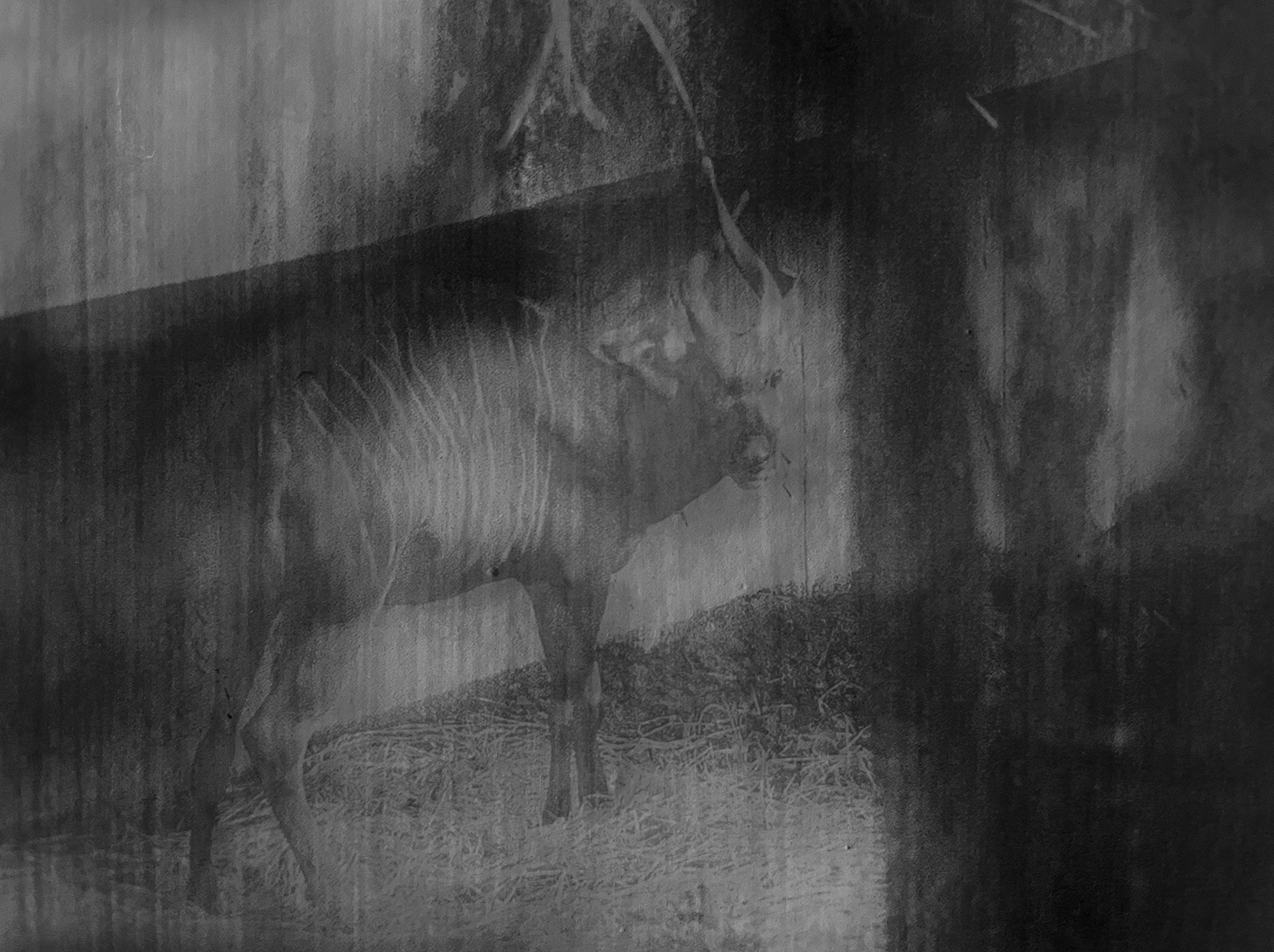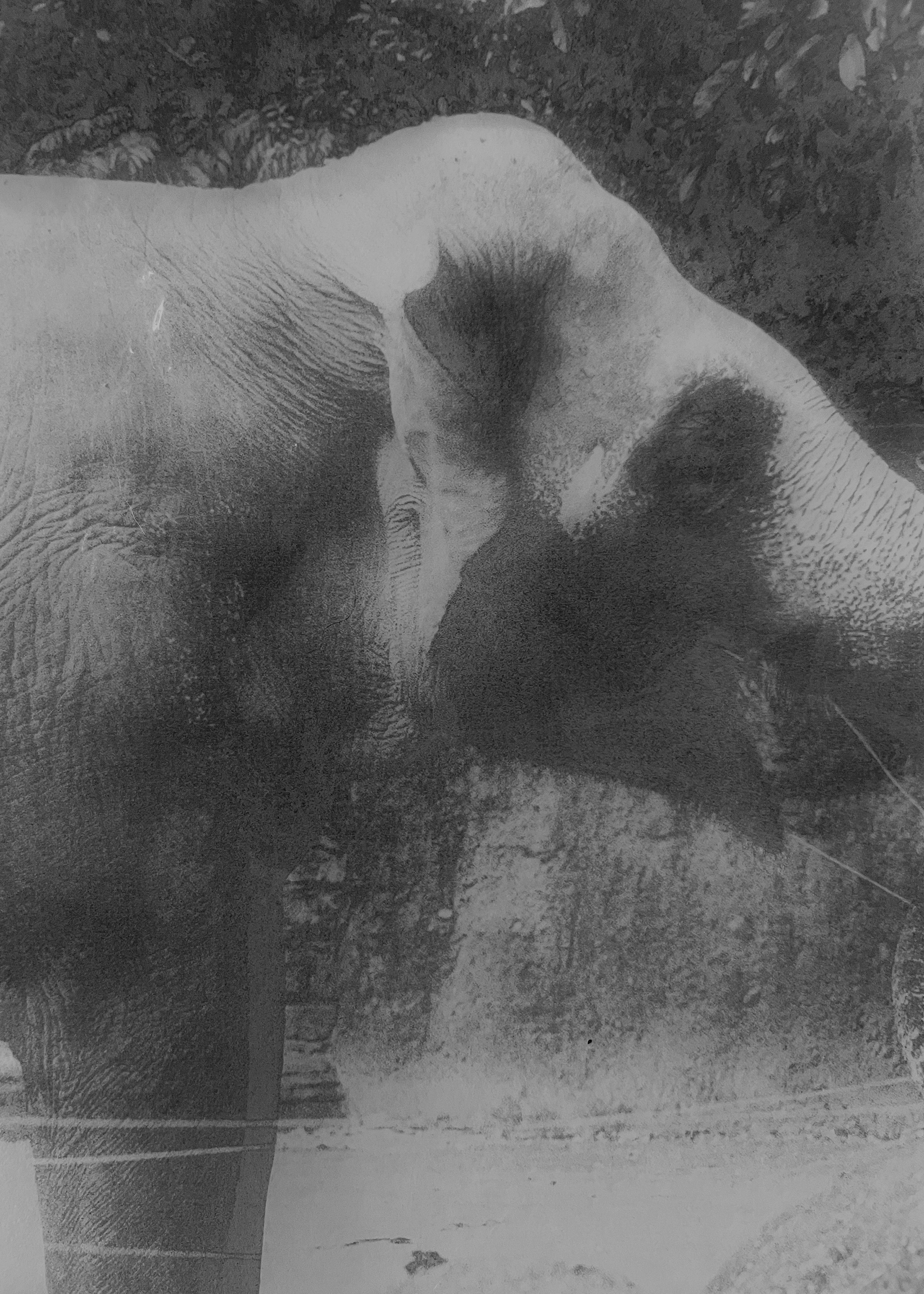






二戰時期日本曾因戰爭因素處決部分上野動物園中的猛獸,並在戰後舉行了動物慰靈祭的儀式,祭拜這些因戰爭而枉死的生命。當時作為日本殖民地的臺灣,在臺北動物園採取同樣的政策與祭儀。時至今日,臺北動物園再次因政治局勢考量,擬定戰時動物撤離策略,二戰的往事與歷史再度被提起。
慰霊像(irei)的拍攝計畫以此時空脈絡作為基礎,以攝影去虛構二戰時期臺北動物園慰靈祭影像,呼喚已逝的生靈,以牠們的面容來重述戰爭的故事。
During World War II, Japan had executed some of the large animals in the Ueno Zoo. After the war, 慰霊祭 (ireisai), a ceremony of consolation, was held to pay tribute to the lives of these animals who died in vain as ‘collateral damage’ of the war. Taiwan, a colony of Japan at that time, adopted the same policy and ritual in the Taipei Zoo. Today, due to the current political situation, the Taipei Zoo is once again considering drawing up an emergency evacuation plan for animals during wartime, and what happened during World War II has been brought up once again.
The project ‘irei’ is based on that specific temporal and spatial context, using photography to imagine and recreate the images of the ireisai at Taipei Zoo during the Second World War. This will be a way to summon the spirits of the departed and retell the story of the war with the faces of those who experienced it.